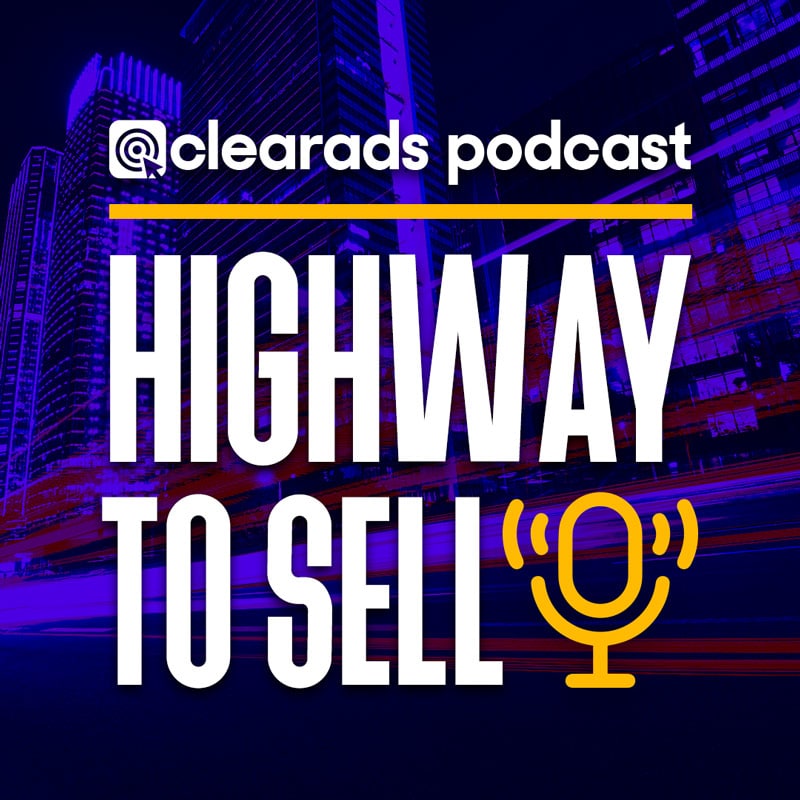Host (Tom Weal): Welcome to the Clear Ads Podcast: Highway to Sell. I’m joined today by our Head of Accounts, Helen Robinson, and a new guest, Max Janari, one of our long-serving account managers. Max, this is your first time on the podcast—would you give a quick intro?
Max: Sure. My background is in engineering and education, but I’ve also sold on Amazon—both in supplements and retail arbitrage. Now I put that experience to use on the backend, managing PPC and DSP, and helping build Clear Ads into a full-service agency.
Tom: Brilliant. Great to have you on. Perfect timing too, because we’re launching a new series designed to set enterprise brands up for success on Amazon. In this first episode, we’re covering Brand Registry and then moving into A+ and A+ Premium content—key foundations for large brands starting on Amazon. So let’s dive in. What is Brand Registry and why is it significant?
Max: Brand Registry is essential for two reasons: protection and promotion. It secures your brand on Amazon, and it unlocks features that help you showcase your products. The application process is straightforward. You provide business information—like certificates of incorporation and ID for the person who registered the company—alongside your trademarks. Each brand must be registered separately, and you can register multiple brands.
If you’re creating a new brand specifically for Amazon, you can apply with a trademark application number. Amazon’s IP Accelerator speeds this up by connecting you with vetted lawyers who know exactly what Amazon requires.
Tom: Once you’re brand registered, what features do you gain access to?
Max: This is where the benefits multiply. You unlock storefronts, A+ and A+ Premium content, and brand analytics. The storefront is Amazon’s equivalent of your own branded website—a controlled space where only your products appear. You can direct ad traffic there for higher conversion rates compared to generic search pages.
You also gain access to Brand Analytics, which provides insights into category performance, search terms, and customer behavior. This helps with new product launches, spotting opportunities, and understanding your brand’s performance compared to the market.
Helen: And let’s not forget trust. Amazon has shifted focus over the years from individual sellers to strong brands. Having consistent brand assets—color schemes, logos, cross-selling modules—creates social proof and legitimizes your presence. It’s like a retail outlet compared to a jumble sale. Customers recognize professionalism and feel safer buying from you.
Tom: That’s powerful. I also remember from experience: if you don’t keep launching new products, Amazon seems to push you down.
Max: Exactly. While Amazon won’t say it outright, evidence shows that consistently launching products helps with search performance. Enterprise brands should aim to launch at least one or two new products per quarter to demonstrate commitment to the platform.
Helen: And enterprise brands should also look at Transparency and Project Zero—two programs linked to Brand Registry that combat counterfeiting. Transparency codes add a unique identifier to each product, assuring customers they’re buying authentic goods. Project Zero provides serialization and gives brands more control over removing counterfeit listings.
Tom: That’s worth the investment, especially when counterfeiters hijack ASINs.
Max: Exactly. It’s not foolproof, but it’s an extra layer of protection that’s especially valuable for big brands.
Tom: Great. Let’s move on to A+ and A+ Premium content. What’s the difference, and why should brands use them?
Helen: A+ content adds detail to your listings. It’s where you can tell your brand story, explain features, add lifestyle images, and include technical specs. It informs customers and helps block competitors by taking up more real estate on the page.
Max: Premium A+ goes even further. To qualify, you need at least 15 approved A+ submissions in the last 12 months and brand stories across your catalog. Once eligible, you unlock full-width images and videos, improved carousels, and in-depth Q&A modules. It’s like having a mini storefront embedded in your listing.
Tom: And what about brand stories?
Helen: Brand Stories sit above A+ content as a side-scrolling carousel. It’s where you communicate values—sustainability, local sourcing, vegan-friendly practices—whatever differentiates your brand. It shouldn’t be filler; it should highlight what matters to your audience.
Tom: What best practices would you recommend for A+ content?
Max: First, study competitors—especially category best sellers. See what’s working, then adapt for your brand. Second, think like a high street retailer. Use consistent logos, colors, and imagery to build recognition and loyalty. And third, take advantage of all available modules. Push competing ads further down the page.
Helen: I’d add: keep it engaging. Use images and video wherever possible; avoid long paragraphs of text. Customers make decisions in seconds. Also, review customer feedback. If reviews consistently praise certain features, highlight them in your A+ content. That not only reinforces strengths but also helps reduce returns by clarifying product details upfront.
Tom: Excellent. And I’ve seen stats suggesting Premium A+ can lift conversions by 20%. That’s massive for enterprise brands.
Helen: Exactly. And one last reminder: don’t “set and forget.” A+ content needs to evolve with your brand. Outdated images or off-brand color schemes can hurt trust. Keep refreshing to maintain credibility.
Tom: Great advice. Let’s wrap with one top tip each.
Max: Add alt tags to your images—A+ content, Premium A+, and storefronts. They help with accessibility and can improve search presence. Just make sure they describe the image accurately in under 100 characters.
Helen: Mine would be to continuously monitor reviews and build customer feedback into your A+ strategy. Use your customers’ own words to sell.
Tom: And mine: don’t just post A+ content and leave it. Revisit it regularly to ensure it’s aligned with your brand and still converting.
Thank you, Max and Helen, for sharing your insights. And thanks to our listeners—remember to like, comment, and subscribe so you never miss an episode. If you or your peers want to explore brand registry or A+ content further, visit us at clearadsagency.com.
